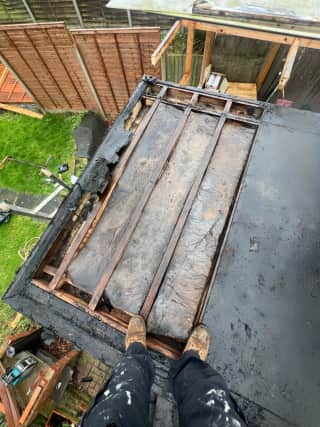How To Replace Flat Roof Felt
Also referred to as tar paper, roofing felt is installed underneath the roof’s shingles to help deny water access to your home. Installing the roofing felt in overlapping layers builds a water barrier in situations whereby the weather damages or blows away the shingles. Although the application of a roofing felt on a flat roof is relatively easier and safer than working on a peaked roof, it’s advisable to take enough care and precautions. If you lack proper training and experience for this task, we’d recommend you employ a reliable professional to guarantee the best results and save you from further headaches especially in cases whereby unfortunate errors are made. This step by step guide will give you a good insight into the flat roof felt replacement process.
• Take a measurement of the width and length of the roof.
• Calculate the square footage by multiplying the numbers.
• Multiply the square footage gotten by three (it’s advisable to install three layers of roofing felt to create a really strong weather barrier).
• Use a claw hammer to remove the existing roofing felt.
• Use utility knife to cut the new felt to fit the length of the roof.
• Place the first piece along the roof’s edge and use a hammer tacker to tack the felt in place with staples or galvanized nails and hammer.
• Put the staples or nails at every 6 inches along the side touching the roof’s edge as well as down the short sides.
• Repeat the same process for the second piece, laying it out beside the first row of felt.
• Cut a piece of felt to the appropriate length using a utility knife to begin the second layer of roofing felt, and cutting it in half, lengthwise.
• Apply construction adhesive along the first row using a trowel.
• Press the first piece for the second layer onto the adhesive. Repeat this process until the roof is covered with a second layer
• Apply construction adhesive over the second layer to install the third layer. Begin with a full piece of felt without cutting it in half.
• Overlap each piece by 2 inches until you’ve completely installed the third layer.




